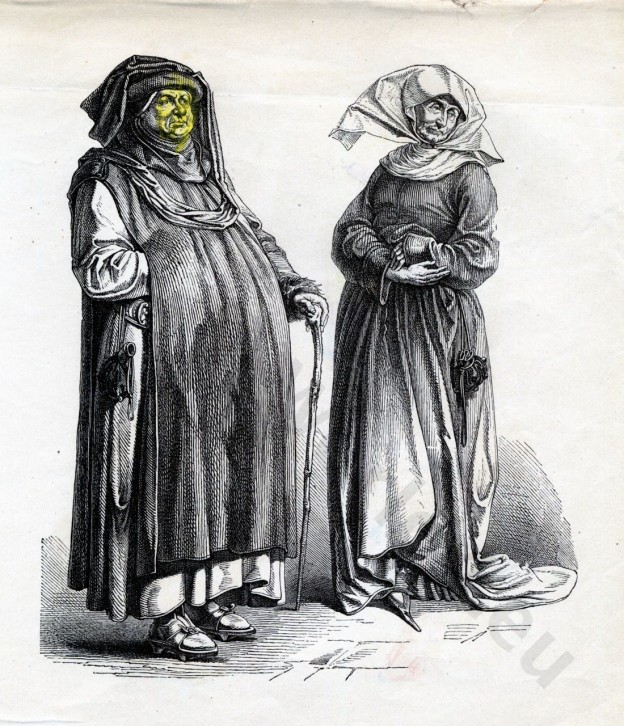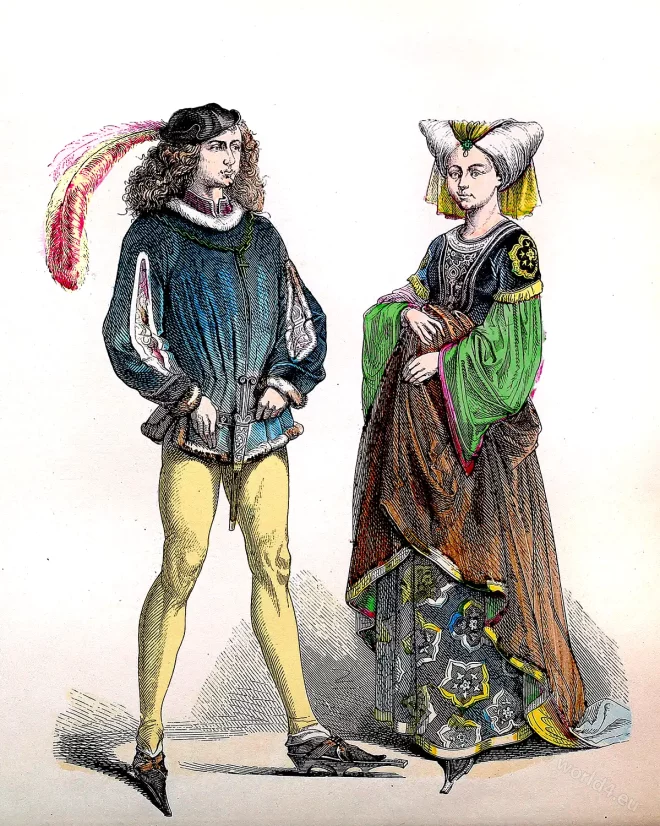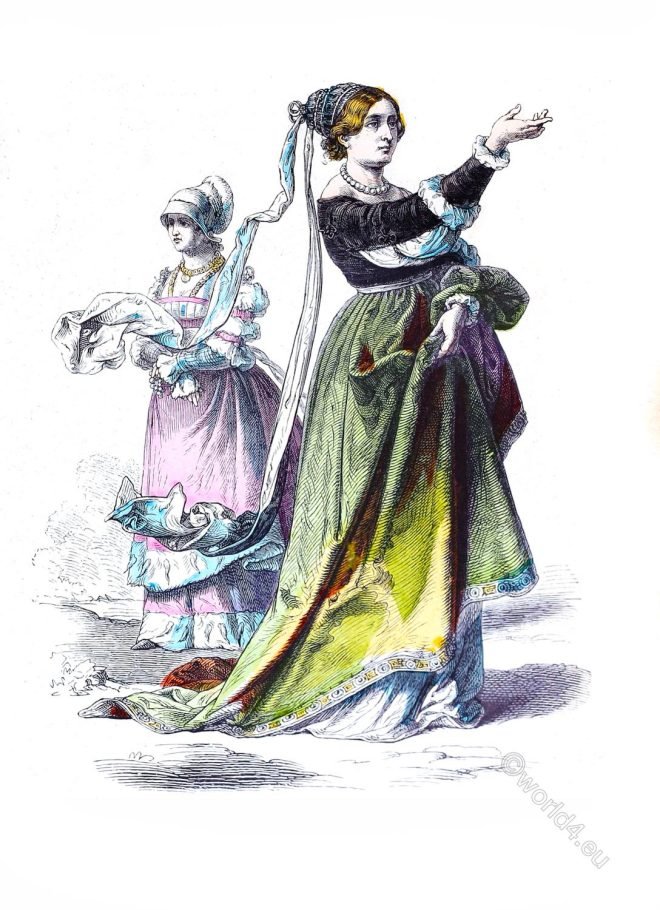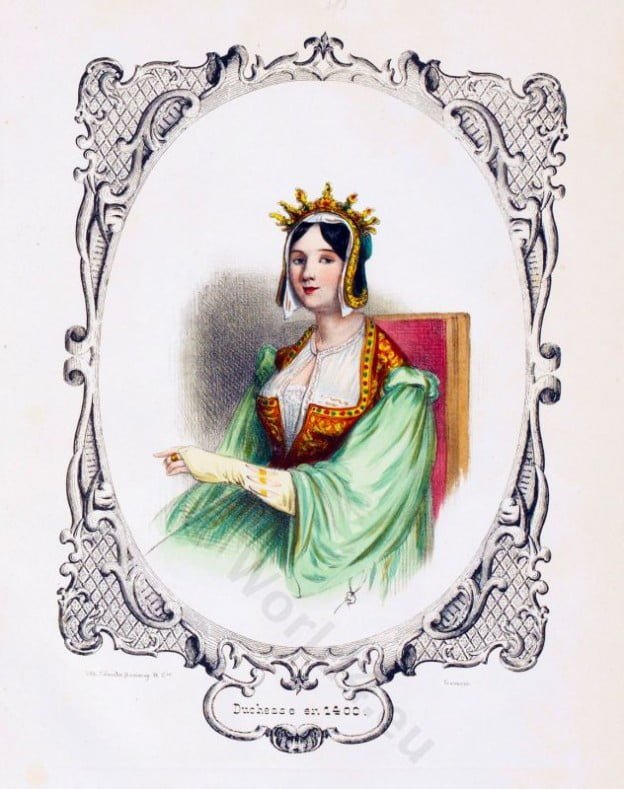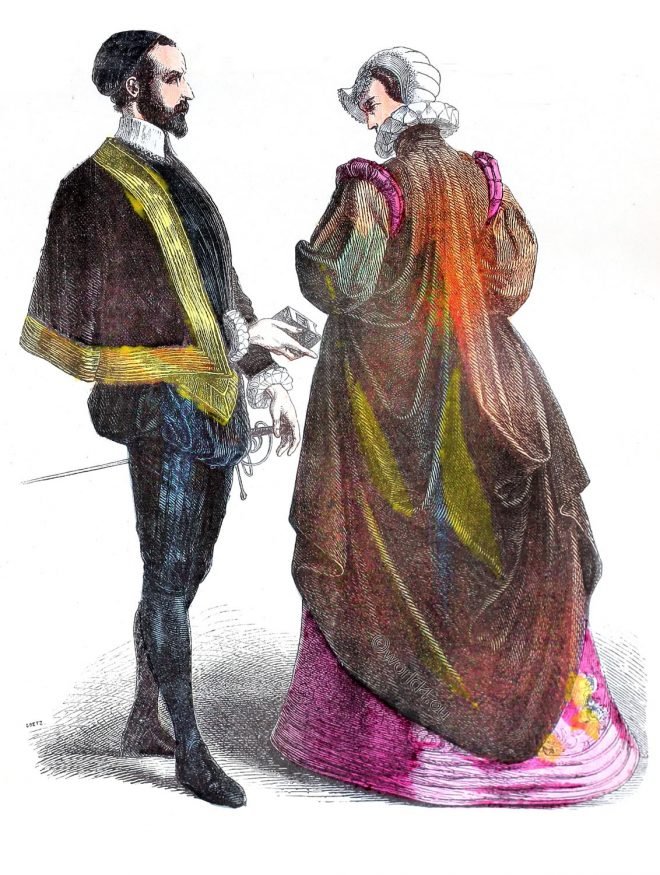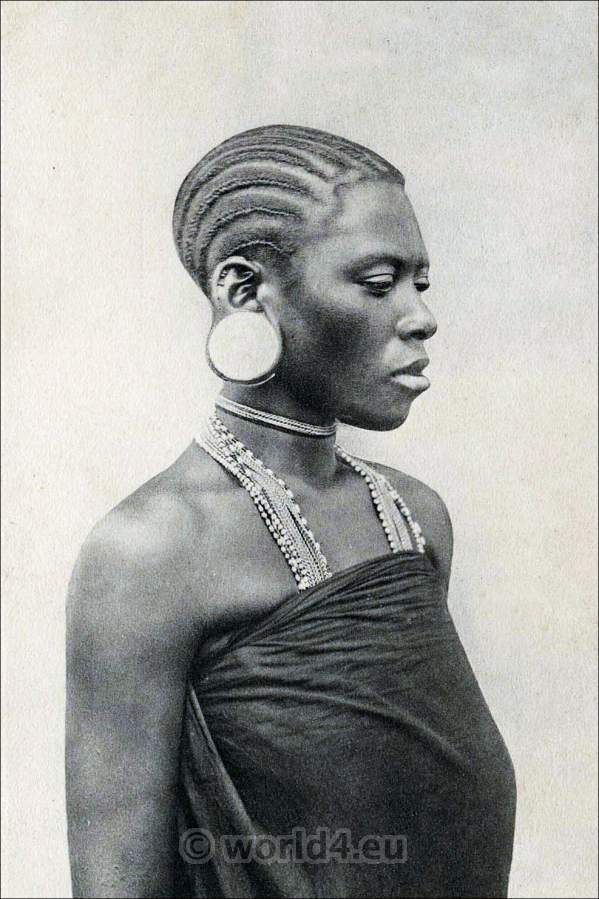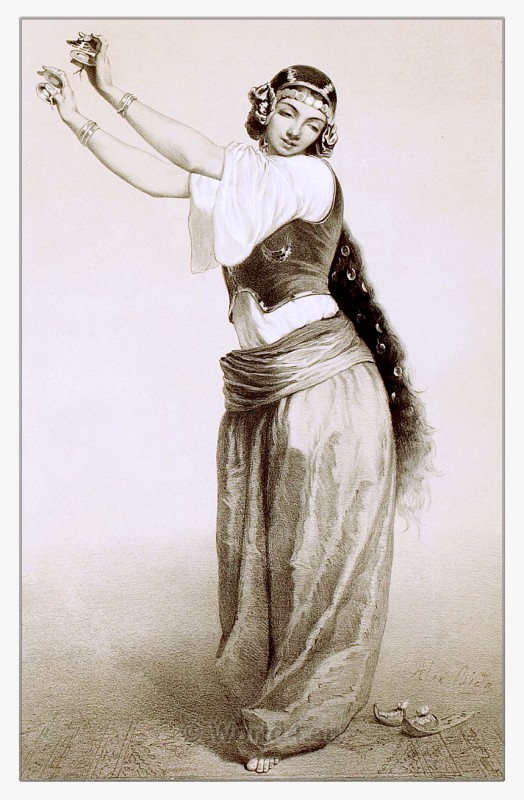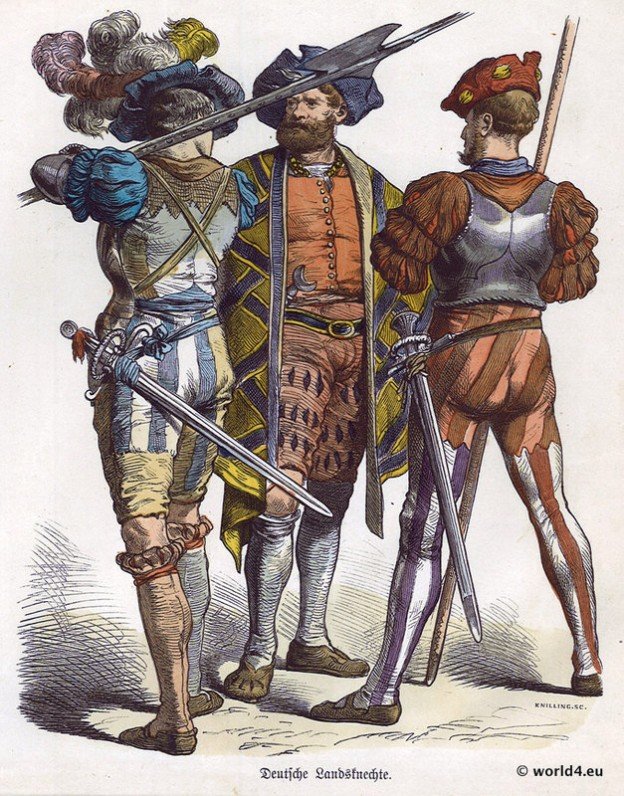German Citizens 1440. They represent the reformation time. This means that the materials were cheaper and coarser.
Burgundy fashion. France nobility 1480.
The fifteenth century was an exaggeration of the modes of the fourteenth.
German patrician women. First third of the 16th century.
German patrician women. First third of the 16th century. Renaissance fashion history.
The Duchesse. French nobility. 14th c..
The woman wears a tight-fitting bodice, furthermore the pleated Chiopa with wide cap sleeves.
French nobleman and noblewoman in court dress. 16th century.
French nobleman and noblewoman. Fashion of the late Renaissance and Spanish Baroque in the period between about 1550 and the Thirty Years War around 1620.
“La Toilette” by François Bouche, 1742.
The famous painting, “La Toilette”, in 1742 by François Boucher shows an intimate scene from everyday life of the rococo in exceptional detail.
Swahili Costume in 1900. Woman from the Mbaruks Tribe.
Swahili Costume in 1900. Woman from the Mbaruks Tribe, East Africa.
Medieval gothic costumes. German princess and maid of honor, 1350.
The princess wears a one-piece, front buttoned dress Cotehardie called, with long tight sleeves and wide neckline (front and rear). Buttons presented at that time a novelty, instead of the lateral lacing allowed a figure-hugging dresses section.
Almeh a class of courtesans or female entertainers in Arab Egypt.
Almeh was the name of a class of courtesans or female entertainers in Arab Egypt. The term became synonymous with ‘belly dancer’ in 19th-century European Orientalism.
Lansquenet. German renaissance military.
German soldiers during the time of the Renaissance and Reformation.

